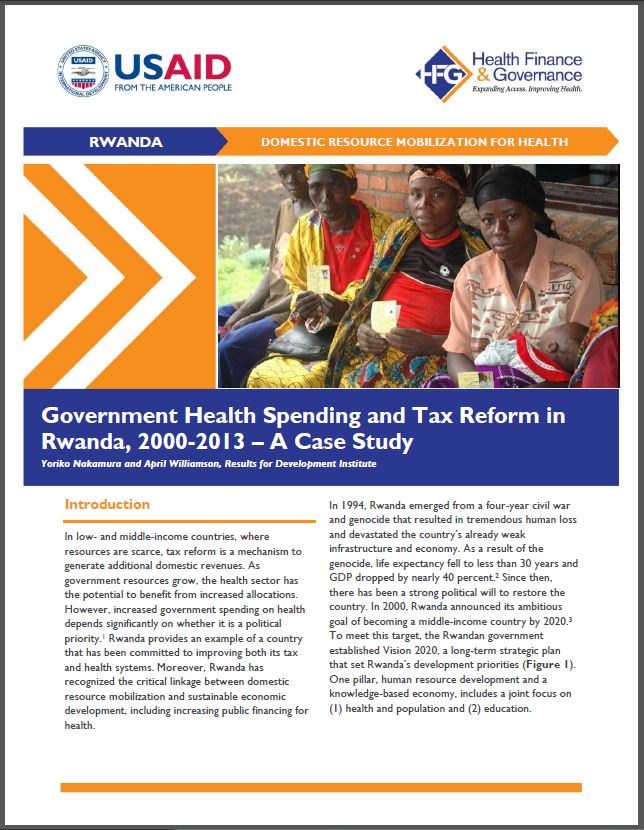Government Health Spending and Tax Reform in Rwanda, 2000-2013 – A Case Study
Categories: Governance and Leadership, Health Finance, Publications, Resource Mobilization
Resource Type: Case Study
Authors: Yoriko Nakamura and April Williamson
Published: 12/01/2015
Resource Description:
 Rwanda provides an example of a country that has been committed to improving both its tax and health systems. Moreover, Rwanda has recognized the critical linkage between domestic resource mobilization and sustainable economic development, including increasing public financing for health.
Rwanda provides an example of a country that has been committed to improving both its tax and health systems. Moreover, Rwanda has recognized the critical linkage between domestic resource mobilization and sustainable economic development, including increasing public financing for health.
In 1994, Rwanda emerged from a four-year civil war and genocide that resulted in tremendous human loss and devastated the country’s already weak infrastructure and economy. As a result of the genocide, life expectancy fell to less than 30 years and GDP dropped by nearly 40 percent. Since then, there has been a strong political will to restore the country. In 2000, Rwanda announced its ambitious goal of becoming a middle-income country by 2020. To meet this target, the Rwandan government established Vision 2020, a long-term strategic plan that set Rwanda’s development priorities. As Rwanda has strived to meet the goals of Vision 2020, it has increased its development-related investments. This has required Rwanda to mobilize greater domestic resources, particularly as it aims to reduce its dependency on foreign aid. As a result of a series of reforms, tax revenue as a percent of GDP rose from 3.6% in 1994 to 13.4% in 2013.
Improvements in tax generation have benefited the health sector. Rwanda has focused on investments in human resource development, as it has recognized the socioeconomic value of building a healthy and educated population. In the early 2000s, Rwanda “reoriented” its government expenditures toward basic health and education. This case study looks at the tax reforms Rwanda has introduced over the past two decades to increase domestic revenue collection, the subsequent improvements in revenue generation, and the impact these changes have had on the health sector.
RELATED:
- Tax Reform as a Strategy to Mobilize Additional Resources for Health
- Mobilizing Tax Revenue and Prioritizing Health Spending in El Salvador – A Case Study



